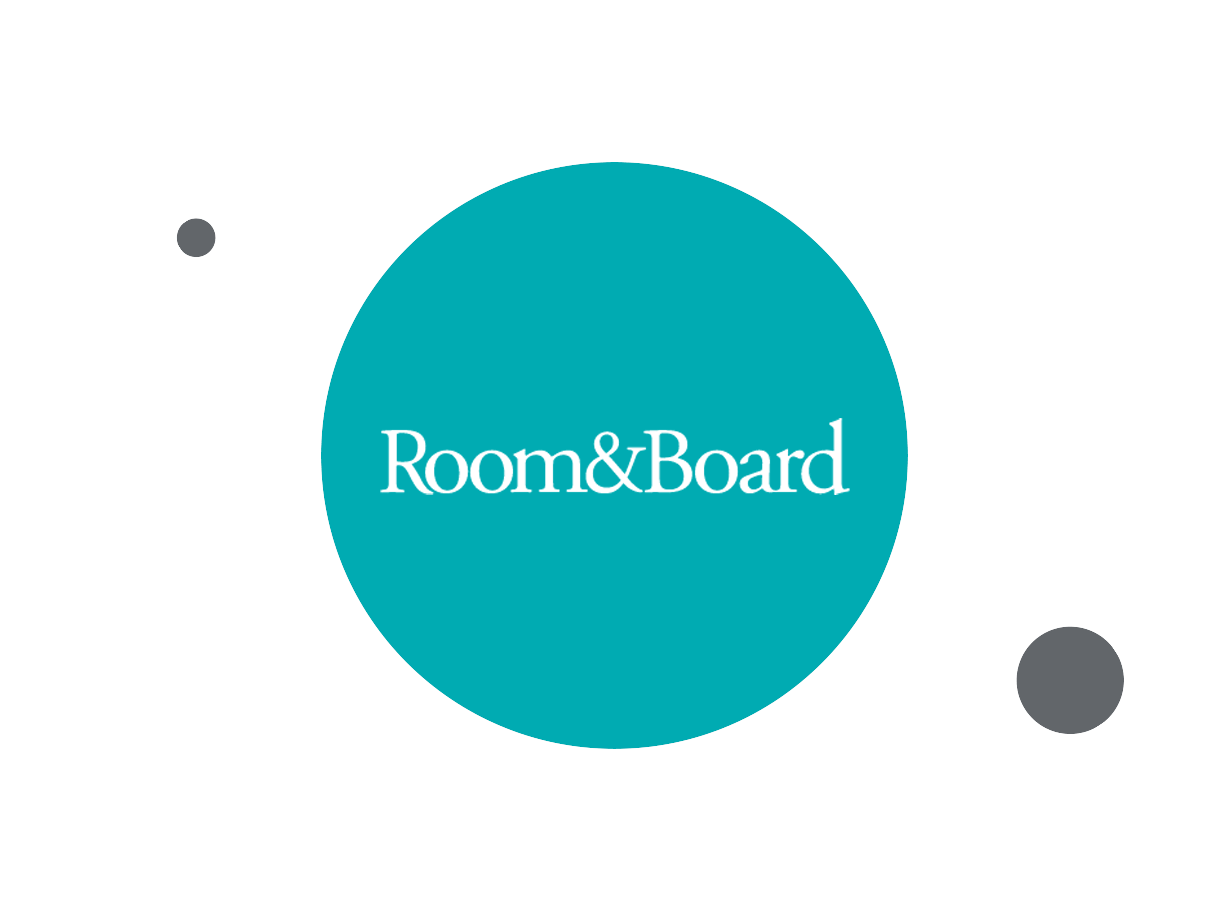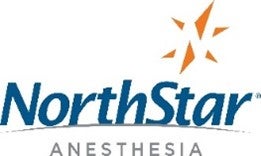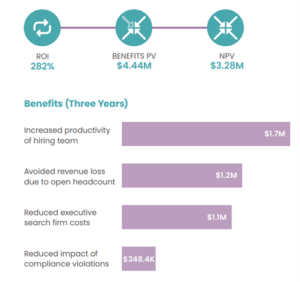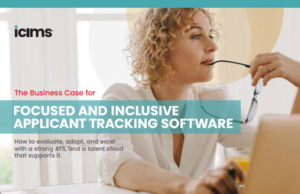- Solutions
- Products
- Community
- Resources
- Company
Create incredible candidate experiences that communicate your brand, mission, and values with recruitment marketing solutions.
Learn moreCommunicate effectively and efficiently with the candidates that can drive your business forward.
Learn moreSelect the right candidates to drive your business forward and simplify how you build winning, diverse teams.
Learn moreHelp your best internal talent connect to better opportunities and see new potential across your entire organization.
Learn moreCommunicate collectively with large groups of candidates and effectively tackle surges in hiring capacity.
Learn moreAccess tools that help your team create a more inclusive culture and propel your DEI program forward.
Learn moreRebound and respond to the new normal of retail with hiring systems that are agile enough to help you forge ahead.
Learn moreAccelerate the hiring of key talent to deliver point of care and support services that meet and exceed your promise of patient satisfaction.
Learn moreAttract and engage candidates with technical competencies, accelerate hiring for much-needed skills, and advance expertise within your valued workforce.
Learn moreSimplify how you recruit finance, insurance, and banking candidates with a unified platform built to match top talent with hard-to-fill roles.
Learn moreYour business strategy depends on your people strategy. Keep both in lockstep with the iCIMS Talent Cloud.
Learn moreBuild an engaging, high-converting talent pipeline that moves your business forward.
Learn moreDeliver the innovation your talent team needs, along with the global scale and security you demand.
Learn moreDeliver tailored technology experiences that delight users and power your talent transformation with the iCIMS Talent Cloud.
Learn moreThe #1 ATS in market share, our cloud-based recruiting software is built for both commercial and large, global employers.
Learn more Talk to salesAttract the best talent for your business with powerful, on-brand career websites that excite candidates and drive engagement.
Learn more Talk to salesBuild talent pipelines, engage candidates with multi-channel marketing campaigns, and use machine learning to automatically surface the right talent for the job.
Learn more Talk to salesEmpower candidates with automated self-service, qualification screening, and interview scheduling through an AI-enabled digital assistant.
Learn more Talk to salesSimplify employee onboarding with automated processes that maximize engagement and accelerate productivity.
Learn more Talk to salesCompliment your sourcing and engagement efforts with award-winning lead scoring and advanced campaign personalization.
Learn more Talk to salesImprove employee experience, retention, and reduce internal talent mobility friction with the iCIMS Opportunity Marketplace.
Learn more Talk to salesVerify skills with game-changing levels of automation and simplicity to improve the quality of hire at scale.
Learn more Talk to salesModernize, streamline, and accelerate your communication with candidates and employees.
Learn more Talk to salesTransform the talent experience by showcasing your authentic employer brand through employee-generated video testimonials.
Learn more Talk to salesGet robust analytics that help you make sense of your data and illuminate your talent pool.
Learn moreSimplify recruiting, dynamically engage talent, and reduce hiring bias with job matching and recruiting chatbot technology.
Learn more Talk to salesGet exclusive intel on industry and market trends along with expert one-on-one advice.
Learn more Talk to salesThe #1 ATS in market share, our cloud-based recruiting software is built for both commercial and large, global employers.
Learn more Talk to salesAttract the best talent for your business with powerful, on-brand career websites that excite candidates and drive engagement.
Learn more Talk to salesBuild talent pipelines, engage candidates with multi-channel marketing campaigns, and use machine learning to automatically surface the right talent for the job.
Learn more Talk to salesEmpower candidates with automated self-service, qualification screening, and interview scheduling through an AI-enabled digital assistant.
Learn more Talk to salesSimplify employee onboarding with automated processes that maximize engagement and accelerate productivity.
Learn more Talk to salesCompliment your sourcing and engagement efforts with award-winning lead scoring and advanced campaign personalization.
Learn more Talk to salesImprove employee experience, retention, and reduce internal talent mobility friction with the iCIMS Opportunity Marketplace.
Learn more Talk to salesVerify skills with game-changing levels of automation and simplicity to improve the quality of hire at scale.
Learn more Talk to salesModernize, streamline, and accelerate your communication with candidates and employees.
Learn more Talk to salesTransform the talent experience by showcasing your authentic employer brand through employee-generated video testimonials.
Learn more Talk to salesGet robust analytics that help you make sense of your data and illuminate your talent pool.
Learn moreSimplify recruiting, dynamically engage talent, and reduce hiring bias with job matching and recruiting chatbot technology.
Learn more Talk to salesGet exclusive intel on industry and market trends along with expert one-on-one advice.
Learn more Talk to salesHow a beloved restaurant hires 40,000+ annually with a great candidate experience.
Learn moreThousands strong, our global community of talent professionals includes creatives, innovators, visionaries, and experts.
Learn moreTogether we’re creating the world’s largest ecosystem of integrated recruiting technologies.
Learn moreExplore our network of more than 300 certified, trusted third-party service and advisory partners.
Learn moreUncover unique market insights, explore best practices and gain access to talent experts across out library of content.
Get resourcesExpert guidance about recruitment solutions, changes in the industry, and the future of talent.
Learn moreStay up to date with the latest terminology and verbiage in the HR software ecosystem.
Learn moreEmployers everywhere improve hiring efficiently and save money using iCIMS. Estimate the potential business value you can achieve.
Learn moreDive into the Class of 2023 Report highlighting this cohort’s expectations and where employers are willing — and able — to meet them.
Watch nowPartner with iCIMS to build the right strategies, processes, and experience to build a winning workforce.
Learn moreExpert guidance about recruitment solutions, changes in the industry, and the future of talent.
Learn moreThe iCIMS Talent Cloud delivers a secure, agile, and compliant platform designed to empower talent teams, job seekers, and partners with advanced data protection and privacy.
Learn moreView press releases, media coverage, and the latest hiring data. See what analysts are saying about iCIMS.
Learn moreiCIMS is the Talent Cloud company that empowers organizations to attract, engage, hire, and advance the talent that builds a winning workforce.
Learn moreGet to know the award-winning leadership team shaping the future of the recruiting software industry.
Learn moreWe believe the future of work isn't something that "happens" to you. It's something you create. We actively create the future of work with our customers every day.
Learn moreiCIMS is committed to being a responsible and ethical corporate citizen, which is why Environmental, Social and Governance (ESG) initiatives are strategic imperatives.
Learn moreStreamline your tech stack and take advantage of a better user experience and stronger data governance with ADP and the iCIMS Talent Cloud.
Learn moreThe combined power of iCIMS and Infor helps organizations strategically align their business and talent objectives.
Learn moreOur award-winning partnership with Microsoft is grounded in a shared desire to transform the workplace and the hiring team experience.
Learn moreOur partnership with Ultimate Kronos Group (UKG) supports the entire talent lifecycle by bringing frictionless recruiting solutions to UKG Pro Onboarding.
Learn moreLet’s get in touch. Reach out to learn more about iCIMS products and services.
Learn more“Work was already going to change thanks to consumer demand and business innovation. Now, the pandemic of 2020 forces you to leap five years forward in your workforce strategy in a single bound.”
– Forrester, The Future of Work Starts Now, 2020
We all feel it. Talent acquisition is undergoing a significant transformation. Stemming from the state of the world in Q1 2020, we now see a massive shift in how we work.
The good news is you can make your business more resilient to change and achieve ambitious talent goals by equipping your teams with technology purpose built for talent teams—beginning with your applicant tracking system. Today we’ll cover the obstacles talent leaders face today and how to choose an ATS that meets those needs. Think of this as your comprehensive guide to buying an ATS.
You can expect to learn how to:
To learn the solutions above, you’ll first need to understand and reflect upon the obstacles you face today.
The typical objections encountered as you present your case for intelligent recruiting software include:
(Click on the objection you connect with most, or read on to learn about all five)
If your problems are operations and efficiency, align specific tech priorities to current business goals.
You can start with top-level alignment because your business case relies on a clear path to business value.
Take a moment to determine which of the following sample goals align with your current and future business needs (and adjust as necessary):
Current business goals
Future business goals
Suppose your company relates with any of the above current or future goals. That’s just one path to opportunity through your applicant tracking software.
An intelligent, connected applicant tracking system helps you:
The goals you chose are your foundation for business transformation.


Suppose you’re experiencing problems with lengthy procurement and implementation processes that disrupt hiring. In that case, get specific about the required functionality to get hiring expedited and accurate.
You can start by determining your core functionality needs.
Here is an example of core functionality tied to talent attraction:
Once you’ve marked off your core functionality, it’s time to lean on those benefits and value. Below are some of the top benefits of a focused ATS for employers and candidates.
When you align your core functionality needs to tangible value, procurement is more likely to listen to your business case.
Employer benefits and values:
Candidate / employee benefits and values:
The final step in this section is to show proof. (Check out all these customer success stories to find the best example for your specific situation.)
Here is an employer example:
  |
Room & Board achieved a turnover rate under 15%. It maximized their new talent pipelines by automating outreach to prospective job seekers and maintaining robust talent pools to fill open roles across 16 locations. |
|---|
Interested in learning more about core functionality and their benefits and value for:
…then download “The business case for focused and inclusive applicant tracking software.”


Suppose your problem is that your budget is not allocated, and ROI isn’t clear enough to change that. In that case, evaluate which foundation will support your desired functionality.
You can start by determining the applicant tracking functionality you’d like to improve or introduce. Consider the underlying platform you need to keep everything running smoothly.
Many buying committees face the choice between:
But it boils down to this: modern hiring requires more than an add-on recruiting module within your HCM.
If you’re struggling to make a case for an applicant tracking system that won’t disrupt your HCM workflows, here are some key points to support you:
When recruitment is not your HCM vendor’s priority, your team is vulnerable to:
Gartner shares that by 2025, 60% of enterprises will invest in an HCM for HR and talent management but will still need to source 20% to 30% of their HCM requirements from other solutions due to functionality gaps.
When a focused ATS integrates with your HCM, results happen:
  |
  |
  |
|---|---|---|
Suppose your problem is resources are spread thin, and learning curves can deter results. In that case, focus on benefits to show ROI.
Honestly assess the ROI of change. To better understand the benefits, costs, and risks associated with the investment in focused talent acquisition software, Forrester interviewed experienced users of the iCIMS Talent Cloud.
Their key findings include:


Interested in learning more about the qualified benefits and unqualified benefits for:
…then download “The business case for focused and inclusive applicant tracking software.”
Suppose your problem is that there’s fear of risking data integrity when syncing between new systems. Know your stakeholders and translate advantages that matter to each of them.
You can start by identifying your key players, like CHRO, HR Ops, CTO, CEO, and CFO, and aligning their priorities to critical opportunities.
CHRO priorities to align to:
Align your needs with what your CHRO cares about:
Building a dynamic and adaptable organization takes solutions that deliver the right strategic data, insights, and flexibility to create a more productive, more inclusive business. A focused and inclusive ATS embedded in a talent cloud does that while complementing our HR platform.
Check out “The business case for focused and inclusive applicant tracking software” to discover which priorities and opportunities align to your HR Ops, CTO, CEO, and CFO.


Interested in learning more about buying strategies? Check out the conversation in our recent webinar: “Simplify your search for talent tech.”
and receive free tips on how to attract, engage, hire, & advance the best talent.




